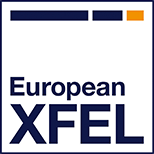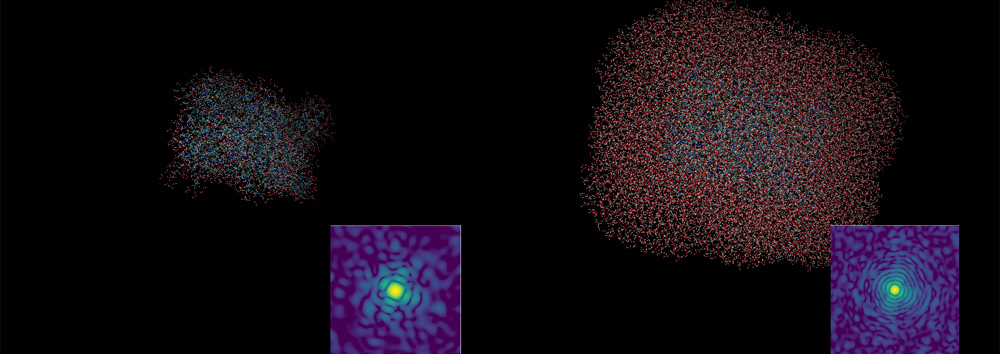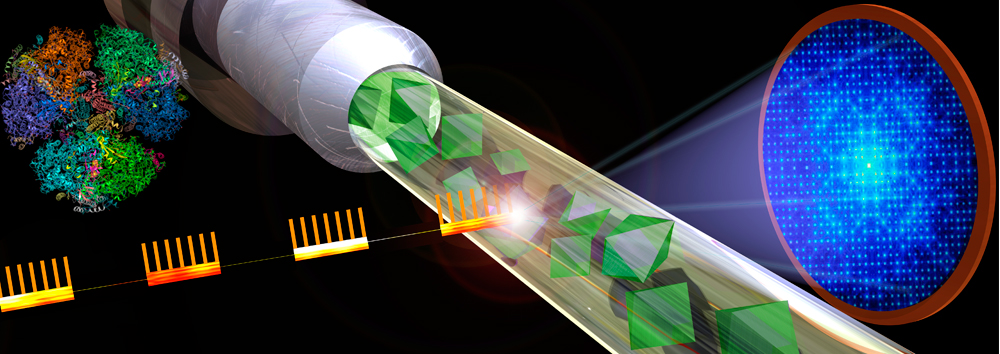They both are large facilities, and they both produce intense X-rays. Although these facilities create X-rays in very different ways, they do have a lot in common. Funded with 7 million euro and started in 2015, the EU project EUCALL (European Cluster of Advanced Laser Light Sources) brought together scientists from two different scientific communities: Scientists doing research at and building synchrotrons or free-electron lasers based on radiofrequency acceleration, and scientists working on the generation and use of X-rays generated by advanced lasers in the near-visible regime. During the three-year project, experts from across Europe worked together to develop solutions for challenges common to these facilities and their communities. The results include new methods for not only data analysis, diagnostic, simulation, and sample delivery technologies, but also for standardizing processes to further increase the efficiency of both types of facilities.
One of the results of this collaboration is SIMEX (Simulations of Experiments), a simulation software package that helps predict experiment outcomes and can model experiments at X-ray lasers, synchrotrons, or optical laser research facilities. Another one is the UFDAC (Ultrafast Data Acquisition) firmware that speeds up the data transfer from detectors to data servers, thus allowing users of high data rate experiments to directly observe the build-up of data and to adjust settings on the fly. A third example is HIREP (High Repetition Sample Delivery), a sample delivery method using artificial intelligence to identify interesting areas on target films and to position these with high precision in the path of an X-ray beam. Other sustainable results of the successful collaboration are the augmentation of the Wayforlight database with more detailed specifications of 121 beamlines from across Europe, as well as the future EUCALL forum that will continue to act as a bridge between the different communities.

About European XFEL
The European XFEL is a 3.4 km long research facility extending from Hamburg to the neighbouring town of Schenefeld in the German Federal State of Schleswig-Holstein. With its repetition rate of 27,000 pulses per second and a peak brilliance a billion times higher than that of the best synchrotron X-ray radiation sources, the European XFEL enables the investigation of scientific problems in a variety of disciplines, including among many others: Structural Biology, Chemistry, Planetary Science, the study of matter under extreme conditions.
© European XFEL They both are large facilities, and they both produce intense X-rays. Although these facilities create X-rays in very different ways, they do have a lot in common. Funded with 7 million euro and started in 2015, the EU project EUCALL (European Cluster of Advanced Laser Light Sources) brought together scientists from two different scientific […]



